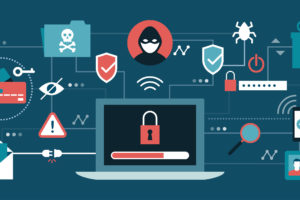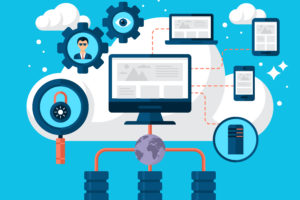The Best Security Protocols for your Employees
Even if you’ve updated every piece of software you use, you may still face cybersecurity threats from an unexpected source — your employees.
According to the 2016 IBM Cyber Security Intelligence Index, 60% of cybersecurity attacks came from within businesses. Interestingly, one-third of those attacks resulted from an employee making a mistake. Whether it was sending an email to the wrong address, clicking on a suspicious link, or responding to a phishing scam, these employees caused their company to be the victim of a cyberattack.
While it’s impossible for employees to be perfect, adopting security protocols can help prevent cyberattacks. It may take effort to instill these security protocols, but if it saves your business from costly attacks and data breaches, the effort is worth it.
1) Use better password management
People get attached to their favorite passwords. Some employees may use the same passwords across several different computers and websites.
This practice may make everyday use simpler for your employees, but having the same password across many different sites and machines creates vulnerability.
If a hacker manages to crack one of your employees’ passwords, they’re likely to try and use that same password to access other critical, sensitive information. If your employee used that password in other locations, those locations are now vulnerable as well.
Experts recommend instituting password protocols. Have employees change their passwords once every other month, use a combination of alphanumeric characters, and not use the same password across different machines and websites. They should also not share passwords through email.
Your business may also benefit from a password management system like 1password.
2) Protect secure information during transfer
This may seem like an obvious tip, but employees may not always consider how vulnerable secure information can be while it’s being transferred. Employees who aren’t tech-savvy might not know that their email isn’t secure, and that important information shouldn’t be stored on too many computers or emailed without encryption.
After investing in a secure, encrypted file-transfer system, explain and implement other security checks on sensitive information. Clarifying who can access which information, and password-protecting important data, can help your employees prevent simple mistakes.
3) Encourage open reporting
Emphasize to your employees that it takes a team to improve a business’s cybersecurity. Provide a safe, easy way for employees to report strange activity on their devices or on the network to your IT professionals. Encourage your employees to speak up as soon as they notice something.
Even if your employee has falsely identified something that an IT professional can easily explain, the false positives can help your IT department catch potential hacks, breaches, or vulnerabilities.
4) Maintain privacy settings
While you legally can’t control what your employees do on social media, it’s a good idea to encourage them to set their security settings to maximum on social media profiles like Facebook and Twitter. These security settings allow less of their information to be readily available online.
In addition to helping them avoid personal cyberattacks, like having their identity stolen or their bank information hacked, higher degrees of privacy can cut down on the number of phishing attacks your business experiences. Hackers won’t be able to use these social media profiles to craft a convincing phishing email, and may move on to an easier target.
Vodigy Networks is a leading IT service provider in Minneapolis and St. Paul. We work with businesses to make technology simple, easy, and seamless. Contact us today.




